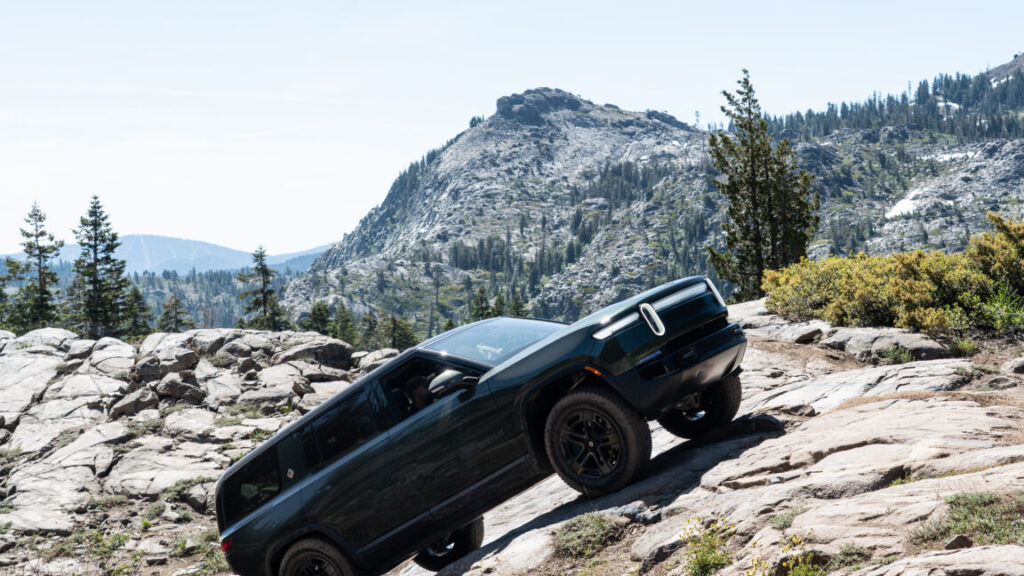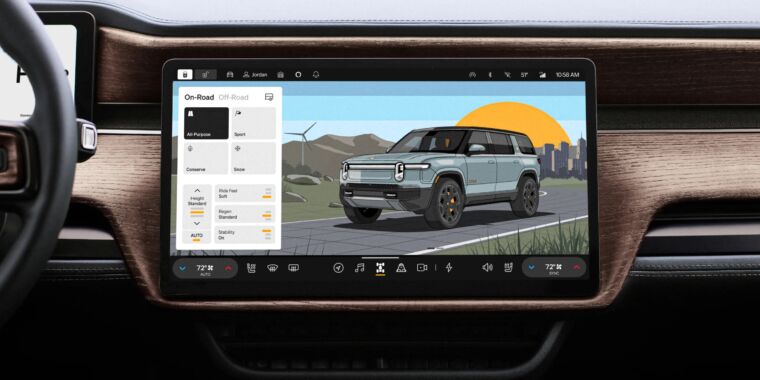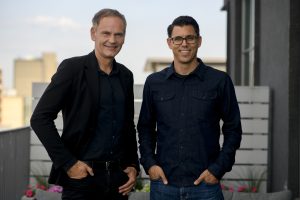Rivian’s new Quad-Motor R1T and R1S beat the competition in any conditions
Faster than a supercar to 60, still able to rock crawl with the best of them.
Lots of EVs can accelerate quickly, few also have off-road abilities that would put a mountain goat to shame. Credit: Tim Stevens
It’s getting harder to find hyperboles to describe the performance of modern EVs. Horsepower figures measured in four digits and acceleration figures clocking in well under three seconds aren’t exactly de rigueur, but they’re well short of rare these days.
Rivian’s latest generation ticks those boxes, joining the automaker’s range alongside the cheaper dual-motor models we tested last year. The new Gen 2 Quad-Motor versions of the company’s R1S SUV and R1T truck offer 1,025 hp (764 kW) and 1,198 lb-ft (1,624 Nm) of torque, enough to get the pick-up from 0 to 60 mph in just 2.5 seconds—the heavier SUV is a tenth slower. That’s awfully quick for a truck that weighs in at around 7,000 pounds (3,175 kg) and can tow 11,000 pounds (5,000 kg) or, in the case of the SUV, seat seven comfortably.
That spread of performance and practicality is impressive, but as I learned in a day behind the wheel of both the $115,990 truck and $121,990 SUV, winding around and over the mountains surrounding Lake Tahoe, that’s just scratching the surface of what they can do.
Rivian launched its second-generation R1 last year, with a cheaper dual motor version. Now it’s time for the more powerful quad motor powertrain to hit the road. And the trails. Tim Stevens
More motors, more potential
As you can guess by the name, the Quad-Motor editions of Rivian’s R1 machines offer four motors, one per wheel. That, of course, provides those astronomical performance figures, providing the sheer force necessary to accelerate them so quickly.
But it goes well beyond that. Most EVs with all-wheel drive—including the cheaper dual-motor R1S and R1T that Rivian started selling last year—rely on a pair of motors: one up front and one out back, each splitting its power across two wheels courtesy of a differential. Each differential divvies up the twisting force from a motor but introduces extra friction and drivetrain losses into the equation.
Most traditional differentials also struggle with wheelspin, such that when one wheel starts to lose grip, the EV actually needs to apply the brakes on that wheel to keep it from spinning wildly. Hitting the brakes while you’re trying to accelerate isn’t great for maximum performance.
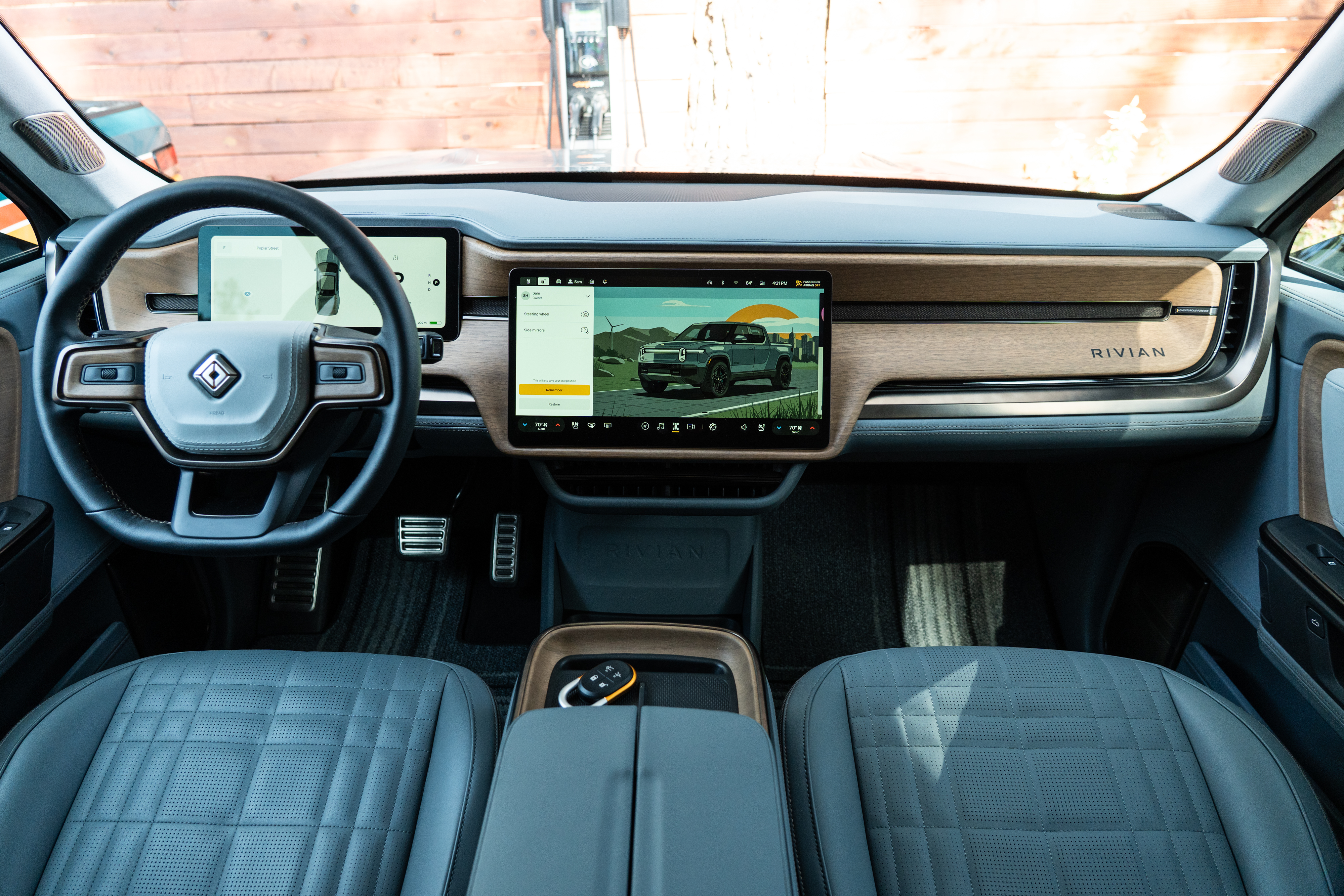
Rivian continues to eschew buttons and phone-casting interfaces like CarPlay. Credit: Tim Stevens
Installing one motor per wheel simplifies the whole setup immensely. Now, each motor can be controlled individually, with no differentials required to ensure power goes where it’s needed. If one wheel starts to slip, the car can simply cut that motor’s power without impacting any of the other three.
That process is helped by Rivian’s new system architecture introduced in the Gen 2 R1 platform last year. This not only greatly simplified the architecture of the vehicles, cutting cost and weight, but it enabled far more finite control over those motors.
The four motors are backed by a 140 kWh (usable) NMC battery pack, which, for the first time on a Rivian, is charged via a Tesla-style NACS port. That pack offers up to 374 miles (602 km) of range per the EPA if you go with the efficiency-minded all-season wheel and tire setup. Switch the Quads over to Conserve drive mode, and Rivian’s engineers told me upwards of 400 miles (643 km) on a charge is possible.
But if you want that eye-opening acceleration figure mentioned above, you’ll need to opt for the optional summer wheel and tire package, which swaps out the low-rolling resistance tires for a set of Michelin Pilot Sport 5 S tires on staggered 22-inch wheels, measuring 275 wide at the front and 305 at the rear.
More into the off-road side of the equation? There’s another wheel and tire package available: 20-inch wheels with aggressive Pirelli Scorpion tires. Choose wisely, because your selected wheel and tire will have a huge impact on the personality of your Quad.
Rolling clean
I started my day in an R1T Quad-Motor on the street performance-oriented Michelin tires, and sadly, the first hour or so was spent idling through traffic. That meant leaving most of those 1,025 horses safely blanketed in the stable, but it did give me time to sample the more nuanced changes in the Quad.
I’ve spent a fair bit of time in Rivian’s second-generation machines, but Quad-Motor features a few updates. The cel-shaded visual display design has been cleaned up a bit, especially the gauge cluster view of the world around you, meaning the entirety of the interface looks equally clean and charming.
Sadly, Android Auto and Apple CarPlay are still missing, which I found particularly annoying when testing the now Atmos-equipped sound system. Since I couldn’t access the music I’d downloaded on my phone, I was stuck relying on the truck’s data connection to stream music through Apple Music. Connectivity is spotty in the rural routes around Lake Tahoe, and it was rare that I got through a single track without stuttering or outright pausing. Fumbling for my phone and having to pair over Bluetooth felt awfully low-rent for a $119,900 as-configured machine.
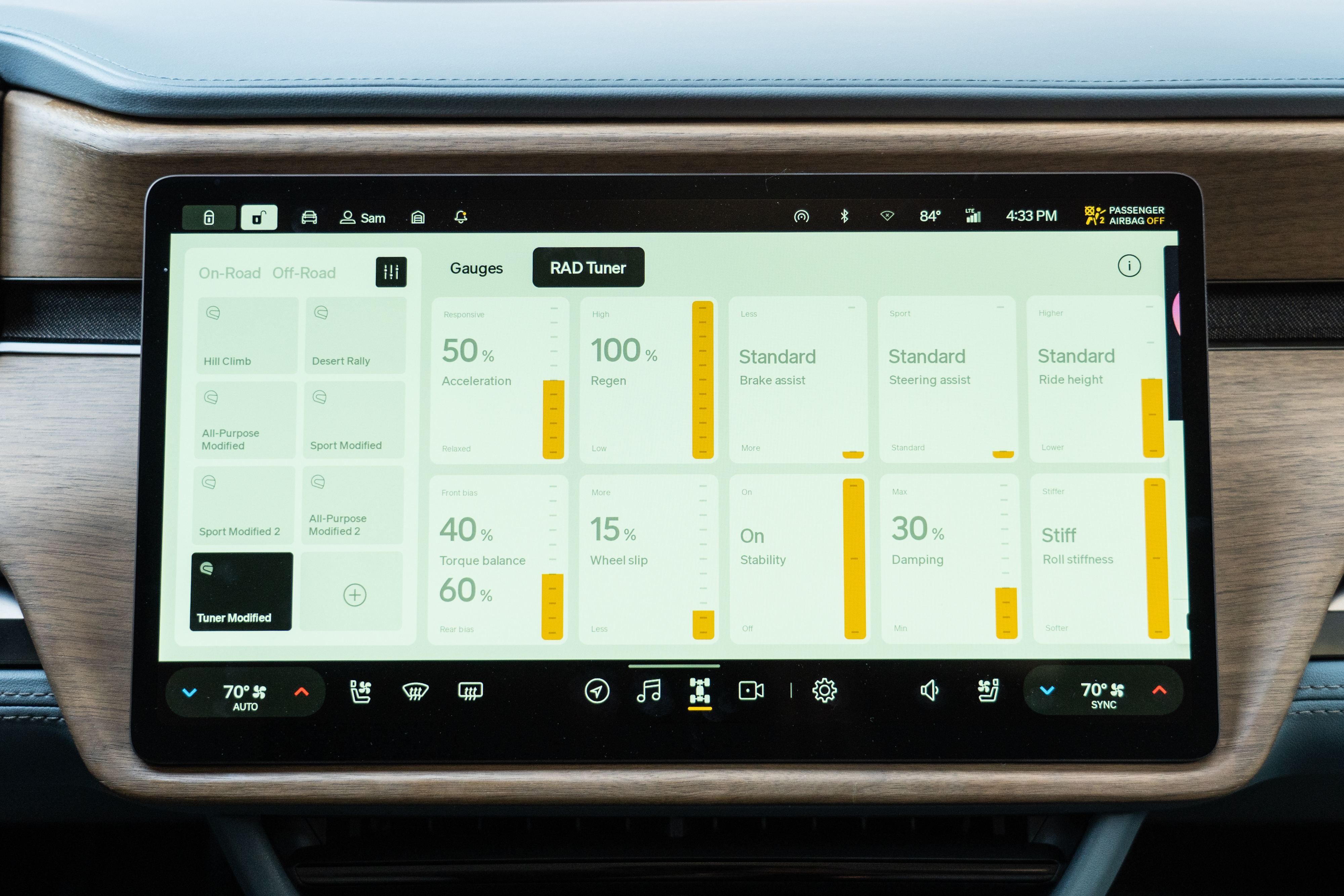
The RAD tuner is new. Credit: Tim Stevens
An unexpected software surprise was the new RAD Tuner. This presents you with a screen full of vehicle parameters to modulate, including standard stuff like suspension stiffness and throttle response, plus far more nuanced parameters like front-to-rear torque split and even roll stiffness. You can modify any of the stock on- or off-road modes or just add new ones to your heart’s content.
As someone who is often frustrated by the lack of configurability in modern EVs, I loved being able to tweak every slider. Each adjustment is paired with an intuitive graph and explanation showing you exactly what it does. Best of all, I could really feel the differences. Dragging the roll slider up and down made the R1T go from a relaxed, floppy feel to a taut, engaging turner.
Unfortunately, nothing I changed made the ride quality any better. The truck was surprisingly harsh over broken asphalt, and there was a fair bit of road noise, too. That’s a big difference from what I’ve experienced from Rivian’s R1 machines in the past, making me think the sportier wheel and tire package is the culprit here. I unfortunately did not have a chance to sample the all-season wheels and tires, but I would have to figure their less aggressive design would be an improvement.
Given that, I’d probably skip the Michelin tire setup. But with it equipped, the truck was impressive. Acceleration was truly eye-opening, as you’d expect, while the ability to seamlessly apply power to each wheel as needed resulted in a confidence-inspiring machine when the traffic cleared. Only the complete lack of steering feedback dampened the fun, but even so, the R1T Quad-Motor is far more engaging on the road than a truck this size has any right to be.
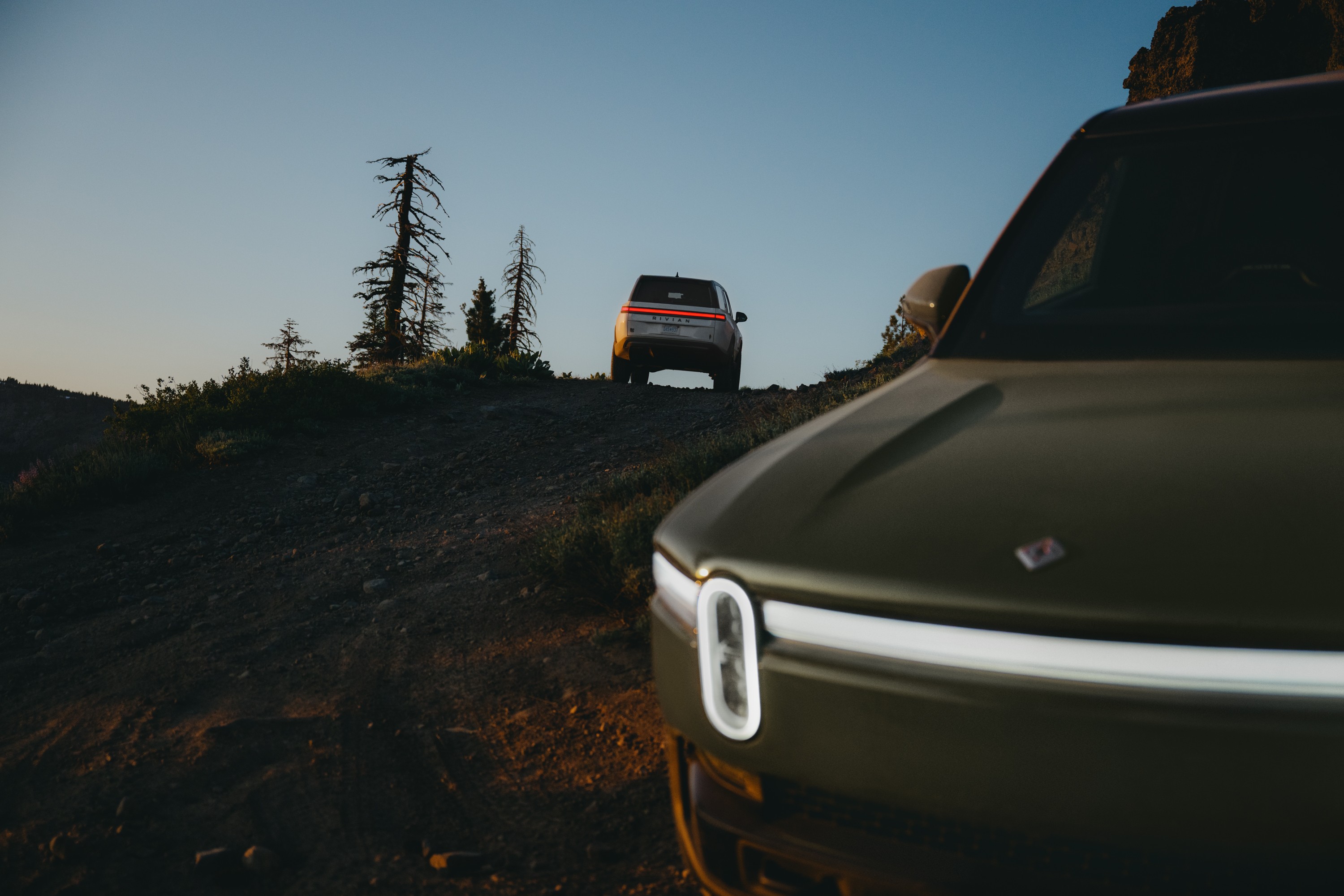
Time to get dirty. Credit: Rivian
But things got even more fun when the road ended.
Rolling dirty
The second half of my time behind the wheel was spent in an R1S Quad-Motor outfitted with the more aggressively treaded Pirelli Scorpion tires. That three-row SUV brought me up and over some astonishingly tricky terrain, including a sheer rock wall that, on foot, would have required a ladder.
Over loose gravel and tricky articulations, the new Quad showed its ability to lean on those tires with grip while quickly cutting power to those left hanging in the air. This is the kind of next-level traction management that trumps locking differentials and makes an R1 Quad-Motor a cinch to drive up even the most extreme terrain.
It was easy going down, too. On loose surfaces, with the regen set to maximum and the SUV’s central display showing the output of the individual motors, I could see how each corner of the vehicle dynamically ramped its regen up or down to match the available grip. The result was a clean, straight descent.

Tire choice is quite important. Credit: Tim Stevens
The Quad-Motor is even easy to turn around in tight spaces. Rivian’s original Tank Turn returns, now rebranded and expanded as the Kick Turn, enabling 360-degree spins on loose surfaces or even tail-dragging pivots around tight corners. The process of engaging this mode is a bit clumsy, requiring you to hold buttons on the steering wheel simultaneously with both thumbs to indicate spin direction. But, when off-road at least, this helps to make up for the R1’s continued lack of rear steering.
At the end of the day, I honestly wasn’t sure whether I was more impressed by the on-road or off-road capabilities of Rivian’s new Quad-Motor machines. That spectrum of performance makes the top-shelf R1 series unique, an addictive mixture of supercar speed and super truck capability.
Rivian’s new Quad-Motor R1T and R1S beat the competition in any conditions Read More »
